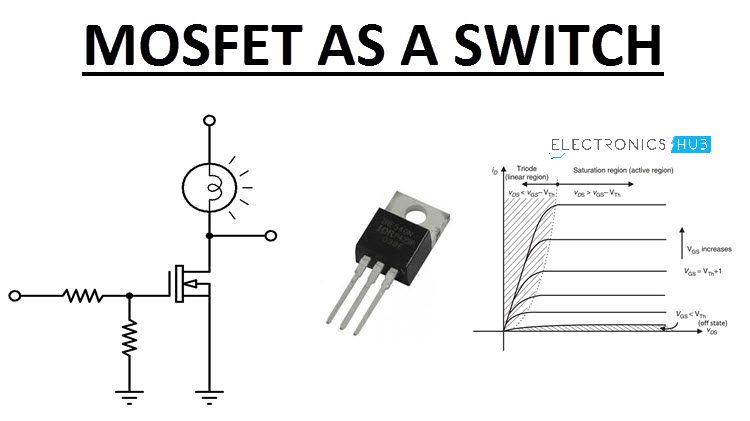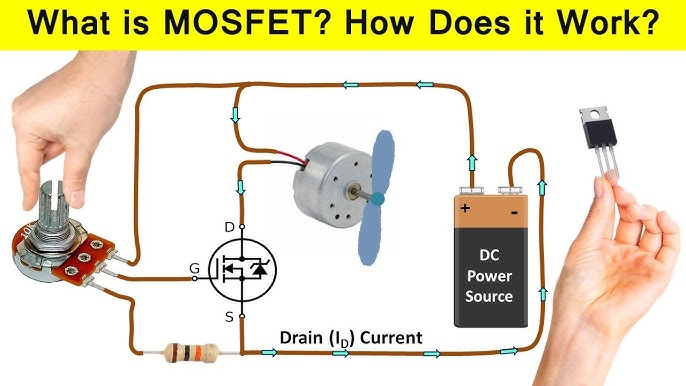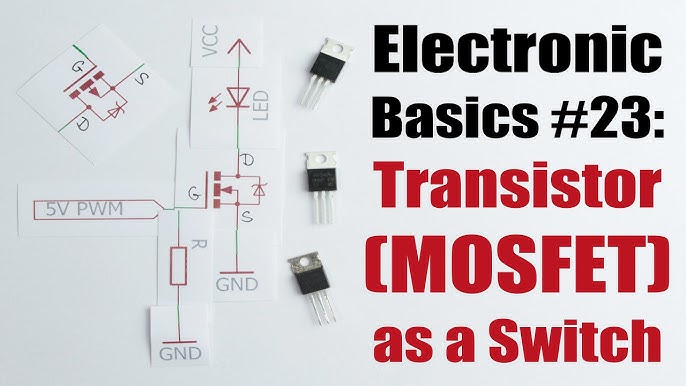You ask me how a MOSFET transistor work? Well, that thingamajig, it’s like a water faucet, you know?

This here MOSFET, it’s got three parts, kinda like a faucet’s got a handle, a spout, and a pipe comin’ in. We call ’em the Source, the Drain, and the Gate. Now, the Source is where all that electricity comes from, like the water from the well. The Drain, that’s where it goes out, like the water goin’ down the sink. And the Gate? That’s the handle, the one that controls the flow.
When you ain’t usin’ no water, the faucet’s off, right? Same with this MOSFET transistor. When the Gate ain’t got no electricity on it, nothin’ flows from the Source to the Drain. It’s like the faucet’s handle is turned all the way off. No water, no electricity, you get me?
Now, you put a little bit of electricity on that Gate, and what happens? It’s like turnin’ the faucet handle just a smidge. A little bit of water starts to trickle out. Same here, a little bit of electricity on the Gate, and a little bit of electricity starts flowin’ from the Source to the Drain. That’s how this MOSFET controls things, see?
You put more electricity on the Gate, it’s like turnin’ the faucet handle more. More water comes out, right? More electricity on the Gate, more electricity flows from the Source to the Drain. This MOSFET transistor, it’s all about controllin’ that flow. That is what MOSFET transistor work for.
- Source – Where the electricity comes in.
- Drain – Where the electricity goes out.
- Gate – Controls the flow of electricity.
Now, this whole thing, it’s like a switch, too. You can turn it on, you can turn it off. You put enough electricity on the Gate, and it’s like the faucet’s wide open. Electricity’s just gushin’ from the Source to the Drain. You take that electricity off the Gate, and it’s like slammin’ the faucet shut. Nothin’ flows. MOSFET work like a switch, simple like that.

They say this MOSFET is better than them other old-timey transistors. Why? Well, they say it’s faster, like a new pump that gets the water movin’ quicker than the old hand pump. And it don’t waste as much energy. Like, the old pump, you’d be pumpin’ and pumpin’, and half the water would just spill out. This MOSFET, it’s more efficient, like a pump that don’t waste a drop.
And another thing about this MOSFET work. It’s like, you can have a tiny little stream of water, or you can have a big ol’ gush, all dependin’ on how much you turn that handle. This MOSFET, you can have a tiny little bit of electricity flowin’, or you can have a whole lot, all dependin’ on how much electricity you put on that Gate.
So, you see, this MOSFET transistor, it ain’t that complicated. It’s just like a water faucet. You control the flow of electricity with the Gate, just like you control the flow of water with the faucet handle. And it’s a switch, too. On or off, just like that. And it is how MOSFET transistor work.
Now, these young folks, they use these MOSFET things in all sorts of gadgets. Them computers, them phones, all that stuff. They say it’s ’cause these MOSFETs are so small and they work so good. I don’t know much about all that, but I do know they’re like little switches, controllin’ the electricity, just like I said. It’s really important for a MOSFET to work well.
They also talk about somethin’ called a MOS capacitor. Sounds fancy, don’t it? But from what I understand, it’s just a part of this MOSFET, the part that helps control the flow. Like the guts of the faucet, I reckon. You don’t see it, but it’s in there, doin’ its job.

Back in my day, we didn’t have none of this fancy stuff. We had to make do with what we had. But I guess times change. And these MOSFET things, they seem to be a big part of how things work now. It is how a MOSFET transistor work in modern world.
Anyway, I hope I explained it good enough for you. It ain’t rocket science, you know? Just a little thingamajig that controls the electricity, like a faucet controls the water. That’s all there is to it. You need to know how a MOSFET transistor work to use it properly. Just remember the Source, the Drain, and the Gate. And that Gate, that’s the one that’s in charge.

